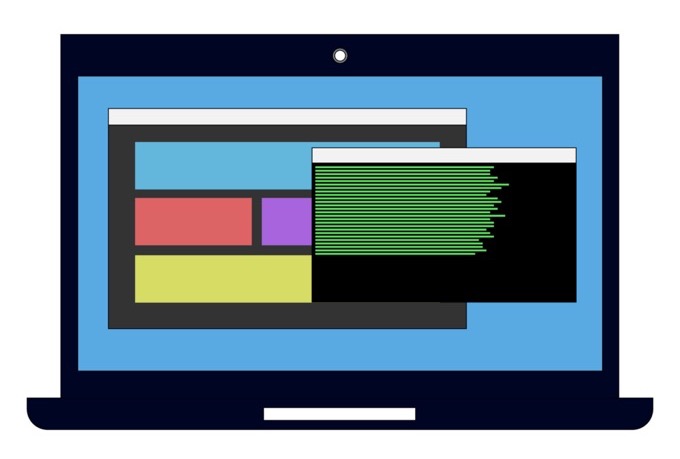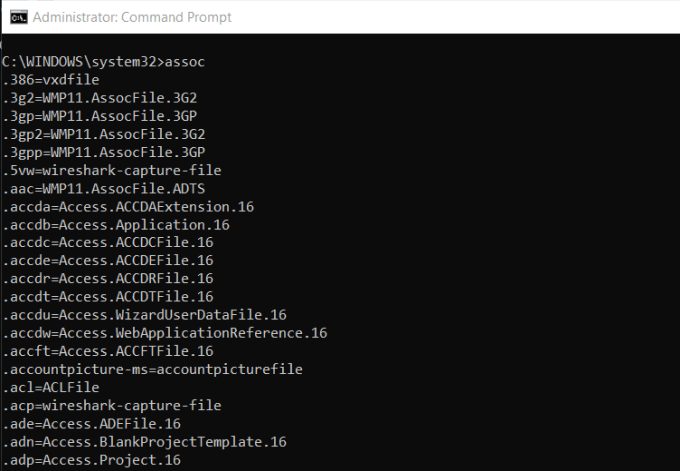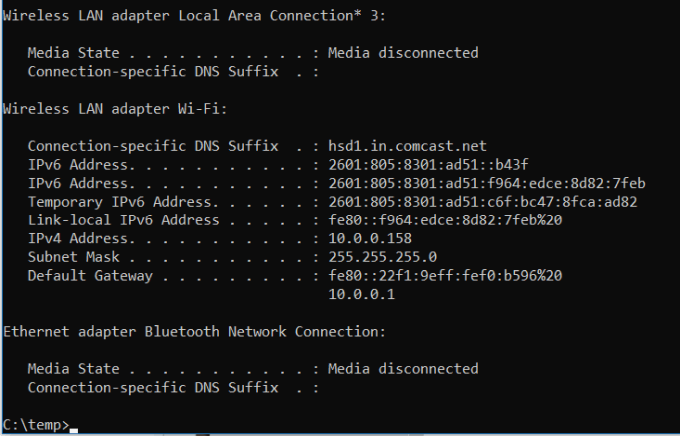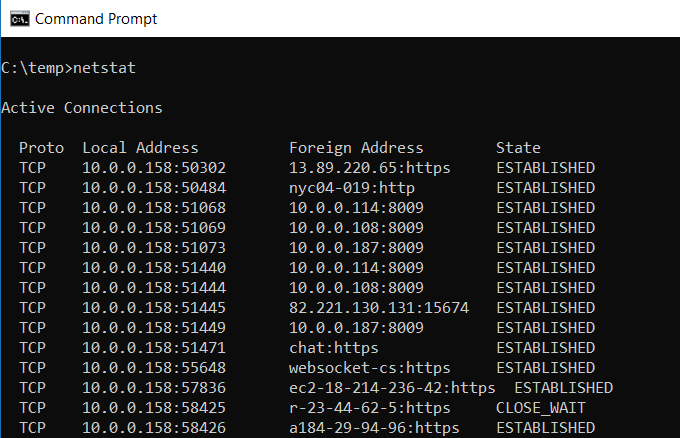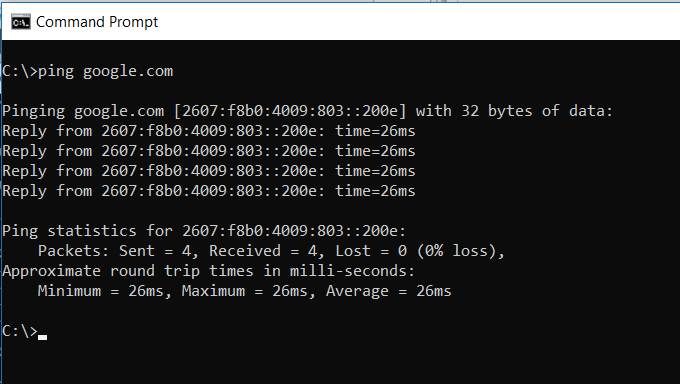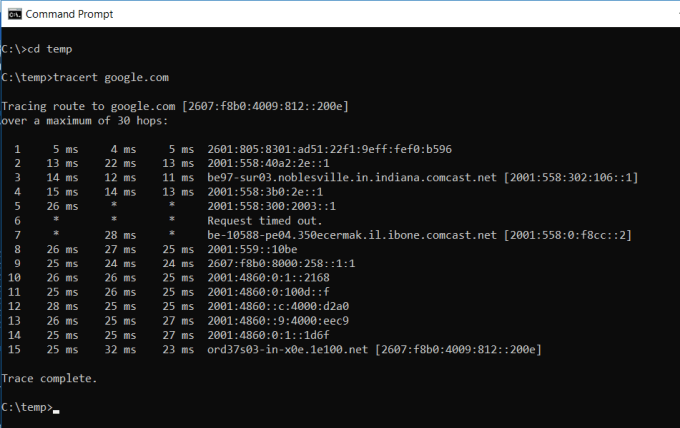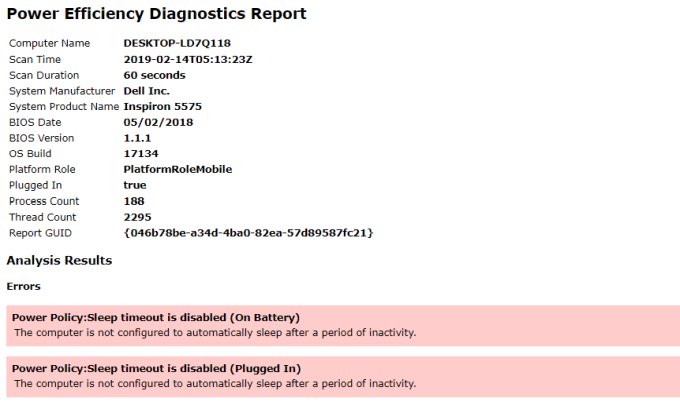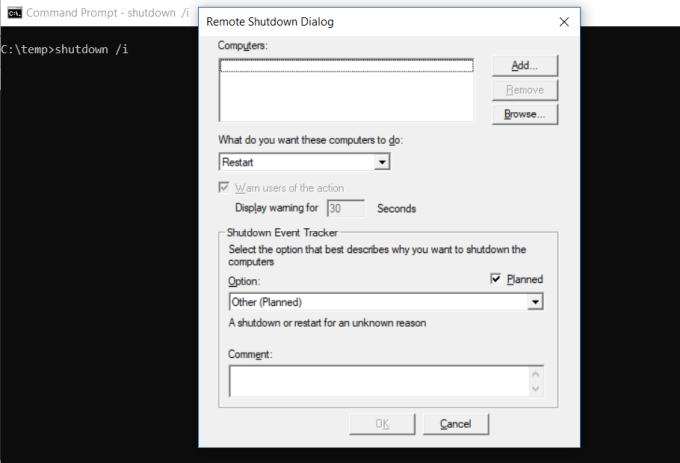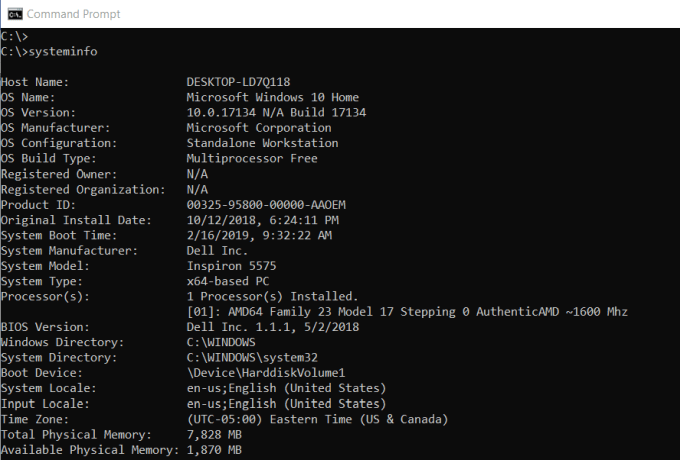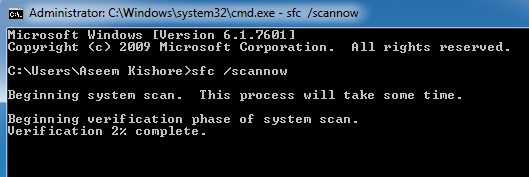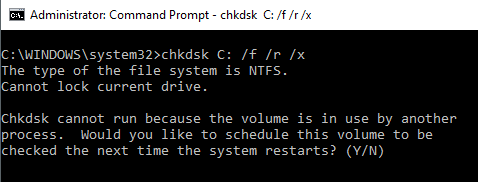- 10 Useful Windows Networking Commands
- 1. Ping Command
- 2. ipconfig Command
- 3. Hostname Command
- 4. getmac Command
- 5. arp Command
- 6. NSlookup
- 7. Nbtstat
- 8 Net Command
- 9. Netstat Command
- 10. TaskKill Command
- How to Open Command Prompt
- Open Command Prompt to Execute Commands in Windows 10, 8, 7, Vista, & XP
- Open Command Prompt in Windows 10
- Open Command Prompt Through the Start Menu
- Open Command Prompt Using Power User Menu
- Open Command Prompt in Windows 8 or 8.1
- Open Command Prompt in Windows 7, Vista, or XP
- Other Ways to Open Command Prompt
- Elevated Command Prompts and Old Windows Versions
- 21 CMD Commands All Windows Users Should Know
- 1. ASSOC: Fix File Associations
- 2. FC: File Compare
- 3. IPCONFIG: IP Configuration
- 4. NETSTAT: Network Statistics
- 5. PING: Send Test Packets
- 6. TRACERT: Trace Route
- 7. POWERCFG: Power Configuration
- 8. SHUTDOWN: Turn Off Computer
- 9. SYSTEMINFO: System Information
- 10. SFC: System File Checker
- 11. NET USE: Map drives
- 12. CHKDSK: Check Disk
- 13. SCHTASKS: Schedule Tasks
- 14. ATTRIB: Change File Attributes
- Other Windows CMD Commands
10 Useful Windows Networking Commands
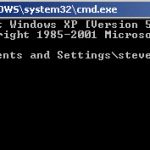
On Windows 10 type cmd in the search box to open a command console.
The networking commands are mainly used for getting system information and troubleshooting networking problems.
Here we look at the 10 commands that I use most often.
1. Ping Command
The ping command is one of the most often used networking utilities for detecting devices on a network and for troubleshooting network problems.
When you ping a device you send that device a short message, which it then sends back (the echo).
The general format is ping hostname or ping IPaddress.
ping www.google.com or ping 216.58.208.68
This article covers the ping command in more detail
2. ipconfig Command
Another indispensable and frequently used utility that is used for finding network information about your local machine like IP addresses, DNS addresses etc
Basic Use: Finding Your IP Address and Default Gateway
Type the command ipconfig at the prompt.
The following is displayed
Ip config has a number of switches the most common are:
ipconfig /all – displays more information about the network setup on your systems including the MAC address.
ipconfig /release – release the current IP address
ipconfig /renew – renew IP address
ipconfig /? -shows help
ipconfig/flushdns – flush the dns cache
3. Hostname Command
A very simple command that displays the host name of your machine. This is much quicker than going to the control panel>system route.
4. getmac Command
Another very simple command that shows the MAC address of your network interfaces
5. arp Command
This is used for showing the address resolution cache. This command must be used with a command line switch arp -a is the most common.
Type arp at the command line to see all available options.
6. NSlookup
Used for checking DNS record entries. See Using NSlookup for more details
7. Nbtstat
Diagnostic tool for troubleshooting netBIOS problems. See This technet article.
8 Net Command
Used for managing users,service,shares etc see here
9. Netstat Command
Used for displaying information about tcp and udp connections and ports. See tcp and udp ports and sockets and how to use the netstat command
10. TaskKill Command
View a list of running tasks using the tasklist command and kill them by name or processor ID using the taskKill command- See this tutorial.
How to Open Command Prompt
Open Command Prompt to Execute Commands in Windows 10, 8, 7, Vista, & XP
Some popular Command Prompt commands you might have heard of include ping, netstat, tracert, shutdown, and attrib, but there are many more. We have a complete list here.
While Command Prompt probably isn’t a tool most of you will use on a regular basis, it can really come in handy now and then, maybe to troubleshoot a specific Windows problem or to automate some kind of task.
How you open Command Prompt differs between Windows versions, so you’ll find steps below for Windows 10, Windows 8 or Windows 8.1, and Windows 7, Windows Vista, and Windows XP. See What Version of Windows Do I Have? if you’re not sure.
Open Command Prompt in Windows 10
Select the Start button.
Type cmd.
Select Command Prompt from the list.
Open Command Prompt Through the Start Menu
Another way to open Command Prompt in Windows 10 is to look in its Start menu folder:
Select the Start button.
Select the Windows System folder from the list.
Choose Command Prompt from the folder group.
Open Command Prompt Using Power User Menu
One more method in Windows 10 is through the Power User Menu. If you’re using a keyboard or mouse, choose Command Prompt from the menu that appears after pressing Win+X or right-clicking the Start button.
You might see Windows PowerShell options in the Power User Menu instead of Command Prompt. In more recent versions of Windows 10, Command Prompt has been replaced by PowerShell, but you can still access it from the Power User Menu by editing the taskbar settings.
Open Command Prompt in Windows 8 or 8.1
Select the Start button and then swipe up to show the Apps screen. You can accomplish the same thing with a mouse by selecting the down arrow icon at the bottom of the screen.
Prior to the Windows 8.1 update, the Apps screen can be accessed from the Start screen by swiping up from the bottom of the screen, or right-clicking anywhere, and then choosing All apps.
If you’re using a keyboard or mouse, a really quick way to open a Command Prompt window in Windows 8 is through the Power User Menu—just hold the WIN and X keys down together, or right-click the Start button, and choose Command Prompt.
Swipe or scroll to the right on the Apps screen to locate the Windows System section heading.
Select Command Prompt. You can now execute whatever command you needed to run.
See our List of Windows 8 Command Prompt Commands for a complete list of the commands available through Command Prompt in Windows 8, including short descriptions and links to more in-depth information if we have it.
Open Command Prompt in Windows 7, Vista, or XP
Open the Start menu from the bottom-left corner of the screen.
In Windows 7 and Windows Vista, it’s a bit faster to enter command in the search box at the bottom of the Start menu and then choose Command Prompt when it appears in the results.
Go to All Programs > Accessories.
Choose Command Prompt from the list of programs.
Here’s our List of Windows 7 Commands and List of Windows XP Commands if you need a command reference for any of those versions of Windows.
Other Ways to Open Command Prompt
Command Prompt in Windows XP through Windows 10 can also be opened with a command. This is especially helpful if you like using the Run dialog box or if Windows Explorer has crashed and the Start menu is inaccessible (and thus the directions above don’t work).
To do this, enter cmd into the command-line interface. This can be in the Run dialog box (WIN+R) or Task Manager’s File > Run new task menu.
Elevated Command Prompts and Old Windows Versions
In versions of Windows released before Windows XP, like Windows 98 and Windows 95, Command Prompt doesn’t exist. However, the older and very similar MS-DOS Prompt does. This program is located in the Start menu and can be opened with the command run command.
Some commands, like the sfc command that’s used to repair Windows files, require that Command Prompt be opened as an administrator before they can be executed. You’ll know if this is the case if you get a message like one of these after trying to execute the command:
- check that you have administrative rights
- . command can only be executed from an elevated command prompt
- you must be an administrator
See How to Open an Elevated Command Prompt for help starting Command Prompt as an administrator, a process that’s a bit more complicated than what’s outlined above.
21 CMD Commands All Windows Users Should Know
So you can have more control over your PC
The Windows command prompt is a feature that’s been a core part of the Windows operating system for a long time. There are some CMD commands that are so useful and easy to use that even regular users see the Windows command prompt as a key part of the operating system.
There are always rumors that it will be phased out at some point, but that’s unlikely to happen any time soon.
The following are 21 of the best CMD commands you should know if you want to have more control over your Windows PC.
1. ASSOC: Fix File Associations
One of the most powerful tools in the CMD command library is the ASSOC command.
Your computer associates certain file extensions with certain programs. This is how your computer knows to open Adobe when you double click a PDF file, or Microsoft Word when you double click a DOC file.
You can view all the file associations your computer knows about by typing ASSOC in the command window. You’ll see the file extension and the program it’s associated with.
You can set the association by typing something like assoc .doc=Word.Document.8.
2. FC: File Compare
Sometimes when files are changed over time, it’s hard to remember what the differences were between versions. You may not know that a CMD command offers the ability to compare files and see all differences, but it’s true.
The FC command performs either an ascii or a binary file comparison and will list all of the differences that it finds.
Fc /a File1.txt File2.txt will compare two ascii files.
Fc /b Picture1.jpg Picture2.jpg will do a binary compare on two images.
3. IPCONFIG: IP Configuration
Network troubleshooting is never simple, but one command that makes it much easier is IPCONFIG.
Using this command in the CMD command prompt returns detailed information about your current network adapter connection including:
- Current IP Address
- Subnet Mask
- Default Gateway IP
- Current domain
This information can help you troubleshoot router issues and other connection issues you could be having with your network adapter.
4. NETSTAT: Network Statistics
Concerned that you could have malware running on your computer that’s connecting to internet locations without you knowing about it?
If you run a NETSTAT command in the command prompt, you can get a list of all active TCP connections from your computer.
5. PING: Send Test Packets
An IT Analyst’s best friend is the PING command. Running this command sends test packets over the network to the target system.
You can use the PING command to test whether your computer can access another computer, a server, or even a website. It can help with revealing network disconnections. It also provides transit time for the packets in milliseconds, so it also reveals a bad network connection as well.
6. TRACERT: Trace Route
TRACERT is a fascinating Windows Command to use. If you’re ever curious to see the path your internet traffic takes to get from your browser to a remote system like Google servers, you can use TRACERT to see it.
The command stands for “Trace Route”, which sends packets out to a remote destination (server or website), and provides you with all of the following information:
- Number of hops (intermediate servers) before getting to the destination
- Time it takes to get to each hop
- The IP and sometimes the name of each hop
TRACERT can reveal how the routes of your internet requests change depending where you’re accessing the web. It also helps with troubleshooting a router or switch on a local network that may be problematic.
7. POWERCFG: Power Configuration
Are you frustrated with how quickly your laptop seems to run out of power? It could be that your power settings are configured as efficiently as possible. There’s a windows CMD command called POWERCFG (power configuration) that can help. Run the command prompt as an administrator and type powercfg – energy to get a full power efficiency report.
The process can take up to about a minute, but when it’s done, you’ll see whether there are any warnings or errors that might help you improve the power efficiency of your system.
View the energy-report.html file to see the details of those errors and warnings.
8. SHUTDOWN: Turn Off Computer
The SHUTDOWN command is a pretty versatile command that lets you shutdown the computer but control the behavior of that shutdown. It’s commonly used as a scheduled task or part of an IT batch job after patches have been applied to a computer system.
Typing shutdown /i from the command prompt will initiate a shutdown, but it’ll upon a GUI to give the user an option on whether to restart or do a full shutdown. If you don’t want to have any GUI pop up, you can just issue a shutdown /s command.
There is a long list of other parameters you can use to do a log off, hibernate, restart, and more. Just type shutdown without any arguments to see them all.
9. SYSTEMINFO: System Information
If you need to know what brand of network card you have, processor details, or the exact version of your Windows OS, the SYSTEMINFO command can help.
This command polls your system and pulls the most important information about your system. It lists the information in a clean format that’s easy to read.
10. SFC: System File Checker
If you’re ever concerned that a virus or some other software might have corrupted your core system files, there’s a Windows command that can scan those files and ensure their integrity.
You need to launch CMD as administrator (right click and choose Run as Administrator). Typing SFC /SCANNOW will check the integrity of all protected system files. If a problem is found, the files will be repaired with backed-up system files.
The SFC command also lets you:
- /VERIFYONLY: Check the integrity but don’t repair the files.
- /SCANFILE: Scan the integrity of specific files and fix if corrupted.
- /VERIFYFILE: Verify the integrity of specific files but don’t repair them.
- /OFFBOOTDIR: Use this to do repairs on an offline boot directory.
- /OFFWINDIR: Use this to do repairs on an offline Windows directory.
- /OFFLOGFILE: Specify a path to save a log file with scan results.
The scan can take up to 10 or 15 minutes, so give it time.
11. NET USE: Map drives
If you want to map a new drive, you could always open File Explorer, right click on This PC, and go through the Map Network Drive wizard. However, using the NET USE command, you can do the same thing with one command string.
For example, if you have a share folder on a computer on your network called \\OTHER-COMPUTER\SHARE\, you can map this as your own Z: drive by typing the command:
Net use Z: “\\OTHER-COMPUTER\SHARE” /persistent:yes
The persistent switch tells your computer that you want this drive remapped every time you log back into your computer.
12. CHKDSK: Check Disk
While the SFC command only checks the integrity of core system files, you can use the CHKDSK command to scan an entire drive.
The command to check the C: drive and repair any problems, launch the command window as an administrator and type CHKDSK /f C:.
This command checks for things like:
- File fragmentation
- Disk errors
- Bad sectors
The command can fix any disk errors (if possible). When the command is finished, you’ll see a status of the scan and what actions were taken.
13. SCHTASKS: Schedule Tasks
Windows comes with a wizard for creating scheduled tasks. For example, maybe you have a BAT file stored on C:\temp that you want to run every day at noon.
You’d have to click through the Scheduled Task wizard to configure this. Or you can type a single SCHTASKS command to set it up.
SCHTASKS /Create /SC HOURLY /MO 12 /TR Example /TN c:\temp\File1.bat
The scheduled switch accepts arguments like minute, hourly, daily, and monthly. Then you specify the frequency with the /MO command.
If you typed the command correctly, you’ll see the response, SUCCESS: The scheduled task “Example” has successfully been created.
14. ATTRIB: Change File Attributes
In Windows, you can change file attributes by right clicking on a file and finding the right property to change. However, instead of hunting around for the file attribute, you can use the ATTRIB command to set the file attributes.
For example, if you type: ATTRIB +R +H C:\temp\File1.bat, it’ll set File1.bat as a hidden, read-only file.
There is no response when it’s successful, so unless you see an error message, the command worked.
Other Windows CMD Commands
As you can see, there are some powerful and useful things you can do with the Windows command prompt, if you know the right commands.
Believe it or not, there are even more commands that will give you the ability to do some things you probably never realized just by typing a simple command.
- BITSADMIN: Initiate upload or download jobs over the network or internet and monitor the current state of those file transfers.
- COLOR: Change the background color of the command prompt window.
- COMP: Compare the contents of any two files to see the differences.
- FIND/FINDSTR: Search for strings inside of any ASCII files.
- PROMPT: Change the command prompt from C:\> to something else.
- TITLE: Change the title of the command prompt window.
- REGEDIT: Edit keys in the Windows registry (use with caution).
- ROBOCOPY: A powerful file copy utility built right into Windows.
If you’re interested in learning more, Microsoft offers a full list of all of the Windows CMD commands included in the latest version of the Windows OS.
Ryan has been writing how-to and other technology-based articles online since 2007. He has a BSc degree in Electrical Engineering and he’s worked 13 years in automation engineering, 5 years in IT, and now is an Apps Engineer. Read Ryan’s Full Bio





:max_bytes(150000):strip_icc()/tim-fisher-5820c8345f9b581c0b5a63cf.jpg)
:max_bytes(150000):strip_icc()/005_how-to-open-command-prompt-2618089-5c646b8bc9e77c00010a5064-f0b29b12d5354d0d8733f5089fa917bb.jpg)
:max_bytes(150000):strip_icc()/001_how-to-open-command-prompt-2618089-5c6467a046e0fb00017c2778.jpg)
:max_bytes(150000):strip_icc()/002_how-to-open-command-prompt-2618089-5c6467fbc9e77c0001566ec6.jpg)
:max_bytes(150000):strip_icc()/003_how-to-open-command-prompt-2618089-5c6468a146e0fb0001f25667.jpg)
:max_bytes(150000):strip_icc()/004_how-to-open-command-prompt-2618089-5c646ad746e0fb0001dcd81a.jpg)
:max_bytes(150000):strip_icc()/cmd-command-task-manager-f43663f7b4994a729926123ab61b7a42.png)
:max_bytes(150000):strip_icc()/sfc-scannow-administrator-command-prompt-775fe2bfbdd54342813261652a3de86f.png)
